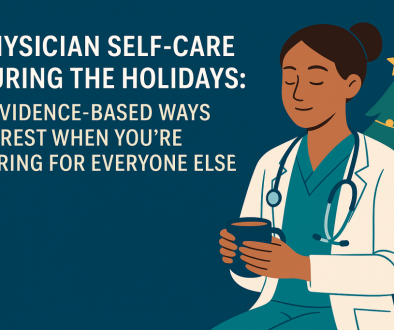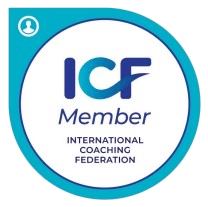Master Medical Teamwork with the LEAD Framework
Have you ever left a multidisciplinary team meeting feeling unheard, frustrated, and convinced that no progress was made? If so, you’re not alone. Many healthcare professionals face challenges when it comes to communicating effectively with colleagues. While 89% of physicians excel at patient communication, only 34% feel confident communicating with their peers. This gap in skills can lead to workplace stress, burnout, and reduced job satisfaction. In healthcare, effective communication isn’t just a “nice-to-have” skill—it’s a necessity. However, most of us never received formal medical teamwork training. That’s why the LEAD framework is so valuable.
Did you roll your eyes when you saw the word “framework”? You’re not the only one. For some reason, when doctors hear about frameworks for non-clinical skills, they often feel frustrated. But think about it. Remember the OLD CARTS mnemonic for taking a patient’s history? That’s a framework. Or the checklist you used for your first physical exam? That’s a framework too. Even the differential diagnosis you create for a 60-year-old woman with a cough is based on a framework. Your ability to learn, remember, and apply a lot of information comes from using frameworks. So, have you ever thought about using a framework to help you communicate and lead your medical teams?
So keep reading about the LEAD framework. It provides a clear structure to navigate complex team dynamics, reduce conflict, and enhance overall communication.
Understanding the LEAD Framework
The LEAD framework stands for Listen, Engage, Adapt, and Develop. It empowers healthcare providers to build better relationships with their colleagues, reduce misunderstandings, and create a more harmonious workplace. Let’s break it down:
- Listen: Active listening with empathy and attention.
- Engage: Building trust through two-way communication.
- Adapt: Adjusting your communication style to fit team dynamics.
- Develop: Strengthening relationships, even in challenging situations.
The Power of Active Listening
Listening isn’t just about hearing words; it’s about understanding the speaker’s perspective. Try the ABCD method to make active listening more actionable:
- Acknowledge: Recognize the speaker’s feelings and perspectives.
- Briefly Summarize: Restate the main points to ensure understanding.
- Clarify: Ask questions to address any doubts.
- Discuss: Collaboratively work toward a solution.
Here’s how it works in practice: Imagine a colleague is worried about a patient’s treatment plan. Using the ABCD method, you would:
- A: Say, “I understand that you’re concerned. Can you tell me more about why?”
- B: Summarize by confirming, “So, you’re worried the patient’s condition isn’t improving. Is that correct?”
- C: Clarify further by asking, “What specific outcomes were you hoping to see?”
- D: Work together to revise the treatment plan with a solution-oriented discussion.
Engage: Building Trust through Communication
Engagement is about fostering trust and clarifying expectations. One way to do this is by asking open-ended questions like “Tell me more” or “What else?” These questions encourage your colleagues to share their perspectives fully. For example, if a team member expresses concerns about a patient’s care, you might respond, “Tell me more about what’s worrying you,” or “What else would you suggest we consider?” This invites collaboration instead of conflict.
Adapt: Navigating Different Communication Styles
Effective communication requires adaptability. Team members often have different communication styles, which can lead to misunderstandings if not addressed. Two key dimensions to consider:
- Focus: People tend to be either task focuses or people focused. Task-oriented individuals prioritize efficiency, while person-oriented individuals value relationships and empathy.
- Pace: Fast-paced communicators prefer quick decision-making, while slow-paced communicators take a more reflective, detail-oriented approach.
Understanding these styles allows you to adjust your approach. For instance, if you’re task-focused, take a moment to build rapport with a person-focused colleague before diving into work. Similarly, if you’re fast-paced, be patient with colleagues who prefer a slower, more methodical discussion. (If you want to learn more about flexing your communication styles, download this FREE guide.)
Develop: Cultivating Strong Relationships
Finally, the “D” in LEAD emphasizes the importance of developing professional relationships. Building emotional intelligence and mitigating team stress are key to creating a positive work environment.
The takeaway? When we focus on medical teamwork and communication, everything else—team coordination, patient outcomes, and job satisfaction—improves.
If you’re ready to take your medical teamwork, communication, and your career to the next level, start implementing the LEAD framework today. Remember: better communication leads to better healthcare outcomes and a more fulfilling professional life.
Mastering medical teamwork and communication isn’t just about better meetings. It’s about finding joy in your work, reducing stress, and creating meaningful connections with your colleagues. Luckily, communication skills can be learned and developed with practice. If you want to improve your communication skills, check out the online course “Mastery and Wellness: How to Thrive as a Physician.” It is a self-paced course that dives deeper into these essential skills. Plus, it’s eligible for CME credit! Get the course here or book a free coaching consult to learn more about it.





